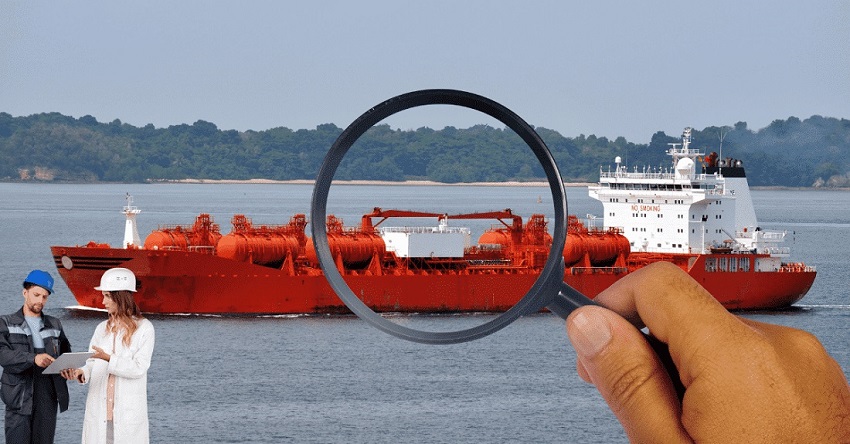Ensure ship tank efficiency with essential maintenance practices at sea. Learn the best methods for a healthy vessel. Dive into expert advice now!

Ships are the backbone of global trade, transporting 90% of goods and raw materials around the world. As such, they are subject to intense wear and tear from constant use in harsh conditions at sea. One crucial aspect of ship maintenance is ensuring the health of its tanks, which serve as vital components for storage, stability, and operation.
In this blog post, we will discuss the best practices for conducting a ship tank health check to ensure safe and efficient operations at sea.
Importance of Ship Tank Health Check
Ship tanks play a crucial role in the transportation of various cargo types, including oil, chemicals, and liquefied natural gas. They also serve as ballast tanks, providing stability and balance to the vessel. Any damage or malfunction in these tanks can lead to severe consequences, such as oil spills, cargo leaks, and even capsizing of the ship.
Furthermore, a damaged tank can also affect the structural integrity of the entire ship, leading to costly repairs and downtime. Therefore, regular inspections and maintenance of ship tanks are essential for preventing accidents, ensuring compliance with regulations, and prolonging the lifespan of the vessel.
Conducting a Ship Tank Health Check
A ship tank health check involves a thorough inspection of all tanks on board to assess their condition and identify any potential issues. Here are some best practices for conducting an effective and efficient health check:
- Develop a Checklist: Before starting the inspection, it is essential to have a checklist of all the components and areas that need to be inspected. This will ensure that no crucial aspects are missed and that the inspection is conducted systematically.
- Use Proper Safety Measures: Inspecting ship tanks can be dangerous, with confined spaces, hazardous materials, and potential exposure to toxic gases. Therefore, it is crucial to follow proper safety procedures, such as wearing personal protective equipment and having a trained team to conduct the inspection.
- Inspect for Structural Integrity: The first step in a ship tank health check is to assess the structural integrity of the tanks. This involves checking for any cracks, corrosion, or deformities that could compromise the tank’s strength or stability.
- Check for Leaks: Next, it is essential to inspect for any leaks in the tanks. This can be done by visually examining for signs of leakage, such as stains or discoloration on the tank’s surface, or by using specialized equipment to detect leaks.
- Assess Coating and Corrosion Protection: Ship tanks are often coated with protective layers to prevent corrosion and extend their lifespan. As part of the health check, these coatings should be assessed for any damage or deterioration and repaired as necessary.
- Test Tank Instruments: In shipping, monitoring levels, temperature, and pressure is crucial. Ship tanks have tools to measure these, but ensuring their accuracy is key. Testing instruments like radar level transmitters detect problems early. Regular testing and calibration guarantee reliability, preventing costly errors.
- Clean the Tanks: Regular cleaning of ship tanks is crucial for maintaining their health. This involves removing any sediment and residue that can accumulate and cause corrosion or hinder accurate readings from tank instruments.
Benefits of Regular Ship Tank Health Checks
Conducting regular ship tank health checks brings several benefits, including:
- Improved Safety: By identifying and addressing potential issues early on, regular inspections help prevent accidents and ensure the safety of crew members, cargo, and the environment.
- Compliance with Regulations: Ship tank health checks are a crucial part of regulatory compliance. Regular inspections help ensure that the vessel meets all safety and environmental standards set by international organizations like the International Maritime Organization (IMO).
- Cost Savings: Early detection and repair of any issues during a health check can save significant costs in the long run. It prevents more extensive damage to the tanks, reduces downtime for repairs, and avoids hefty fines for non-compliance.
- Prolonged Lifespan of the Vessel: Regular maintenance through health checks can significantly extend the lifespan of ship tanks. This not only saves costs but also ensures that ships can continue operating safely and efficiently for many years.
Conclusion
Ship tank health checks are vital for maintaining the safety, efficiency, and longevity of vessels. By following best practices and conducting regular inspections, ship owners and operators can ensure compliance with regulations, prevent accidents and costly repairs, and prolong the lifespan of their ships. As global trade continues to grow, the shipping industry must prioritize proper maintenance of ship tanks to ensure safe and sustainable operations at sea. So, shipping companies must make ship tank health checks a priority and incorporate them into their regular maintenance plans. By doing so, they can ensure the smooth functioning of their vessels and contribute to a safer and more sustainable maritime industry.